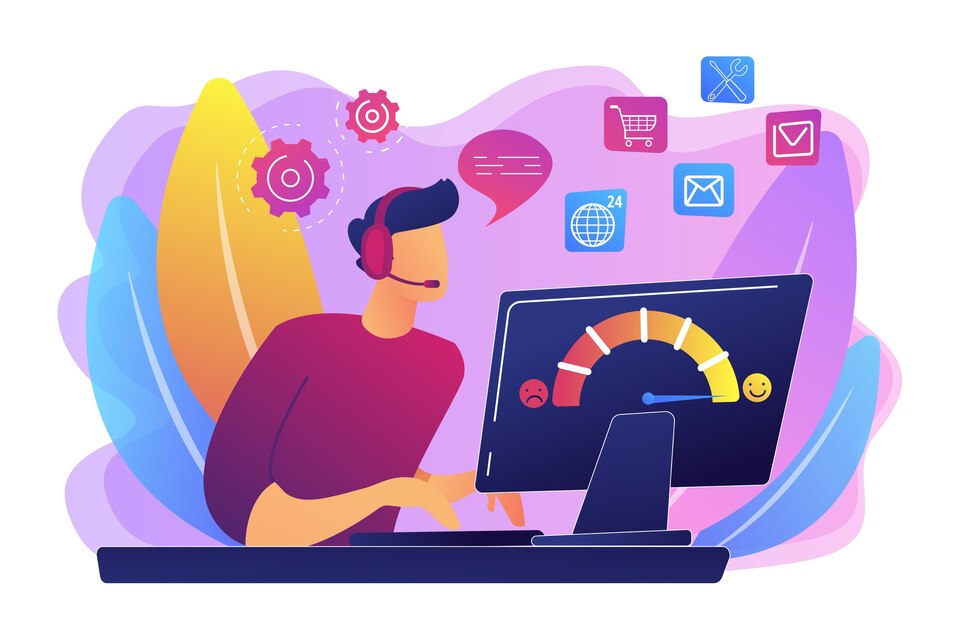Negative customer experiences are inevitable for any business, no matter how exceptional its products or services may be. While these interactions may seem like setbacks, they present valuable opportunities for growth and improvement. When handled effectively, a poor customer experience can transform into a moment of recovery, loyalty-building, and even long-term brand advocacy.
In this article, we’ll explore strategies for turning negative customer experiences into opportunities for growth and how XMC360 empowers businesses to excel in this critical area with innovative customer service solutions.

The Impact of Negative Customer Experiences
A negative customer experience can have significant consequences for a business.
PwC reports that 32% of customers would abandon a brand they love after experiencing just one negative interaction¹. Furthermore, a survey by American Express found that 33% of customers would consider switching to a competitor after a single instance of poor service².
However, there’s a silver lining. When businesses respond effectively to customer complaints, they can not only recover the customer relationship but also create opportunities for advocacy. Research by the Harvard Business Review revealed that customers whose complaints are resolved quickly and satisfactorily are 84% more likely to repurchase from the same company³.
Turning Negative Experiences into Opportunities
Here are some key strategies businesses can use to transform negative customer experiences into opportunities for growth:

1. Act Quickly and Empathetically
Speed matters. Customers value a fast response, especially when something has gone wrong. According to HubSpot, 82% of customers rate an “immediate” response as important when they have a customer service issue⁴. Pairing speed with empathy is critical. Customers need to feel heard and understood, even if the resolution takes time.
XMC360 Connection: XMC360’s customer service tools integrate omnichannel communication, ensuring that customer inquiries and complaints are addressed quickly and consistently across all platforms.

2. Listen and Acknowledge the Problem
Acknowledging the customer’s issue is a critical first step in resolving it. Customers want validation that their concerns are legitimate and taken seriously. Acknowledging the problem doesn’t just de-escalate the situation; it also builds trust and shows customers that their feedback matters.
XMC360 Connection: XMC360’s platform includes real-time analytics and sentiment analysis, helping businesses understand customer pain points more effectively and respond with precision.

3. Offer a Clear Solution
Once the issue is understood, provide a clear and actionable resolution. Transparency is essential; customers appreciate being kept in the loop about what steps are being taken to resolve their problem. A study by Microsoft revealed that 90% of customers say they expect businesses to let them know what will happen next⁵.
XMC360 Connection: With XMC360’s integrated customer management systems, businesses can provide tailored solutions and ensure that all relevant data is available for a quick resolution.

4. Empower Your Team
Customer service representatives should have the tools and authority to resolve issues without needing to escalate them unnecessarily. Empowered employees can provide faster solutions and build rapport with customers.
XMC360 Connection: XMC360 provides a centralized platform that equips teams with the information and tools they need to handle customer issues effectively, minimizing the need for escalations.
5. Follow Up and Gather Feedback
Once an issue has been resolved, following up with the customer is essential. This not only confirms that the solution was satisfactory but also reinforces that the business values the relationship. Additionally, collecting feedback from the customer can provide insights for preventing similar issues in the future.
XMC360 Connection: XMC360’s post-resolution survey tools allow businesses to gather actionable feedback from customers, helping them refine their processes and prevent recurring issues.

The Benefits of Transforming Negative Experiences
By addressing and resolving negative experiences effectively, businesses can unlock several benefits:
- Improved Customer Loyalty: Customers are more likely to remain loyal to brands that handle complaints efficiently and respectfully. Studies show that 70% of customers are more likely to do business with a company again if their complaint is resolved favorably⁶.
- Word-of-Mouth Advocacy: Customers who feel valued and respected are more likely to share positive experiences with others. This can lead to new customer acquisition and improved brand reputation.
- Insights for Improvement: Each complaint is an opportunity to identify weaknesses in your business processes. By analyzing recurring issues, businesses can make informed changes to enhance their products, services, or operations.
How XMC360 Helps Businesses Transform Negative Experiences
At XMC360, we specialize in providing businesses with the tools and insights they need to turn customer complaints into opportunities for growth. Our platform includes:
Omnichannel Support
Engage with customers on their preferred platform—whether it’s email, live chat, or social media—and ensure a seamless experience across all channels.
AI-Powered Sentiment Analysis
Understand customer emotions and priorities in real time to craft more empathetic and effective responses.
Integrated Customer Management
Access all customer interaction histories in one place, enabling faster, more personalized resolutions.
Feedback and Analytics Tools
Collect customer feedback after resolutions and track trends to continuously improve your service strategy.
By leveraging these tools, businesses can address negative experiences with efficiency, empathy, and professionalism—building stronger customer relationships in the process.

Conclusion
Negative customer experiences don’t have to be the end of the road; they can be pivotal moments for businesses to learn, grow, and strengthen their relationships with customers. By acting quickly, listening empathetically, and offering clear solutions, companies can turn complaints into opportunities for loyalty and advocacy.
At XMC360, we help businesses not only resolve customer issues but also build systems that turn every interaction into a growth opportunity. Contact us today to learn how we can help you transform your customer service operations and elevate your brand.
References
- PwC. Future of Customer Experience Survey.
- American Express. Customer Service Barometer.
- Harvard Business Review. The Value of Customer Recovery.
- HubSpot. Customer Service Statistics.
- Microsoft. 2019 Global State of Customer Service Report.
- Zendesk. Customer Experience Trends Report 2021.


